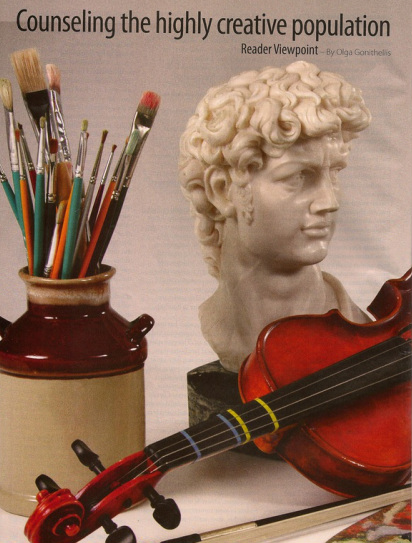http://ct.counseling.org/2013/09/counseling-the-highly-creative-population/
|
What an honor to be included in Counseling Today, the publication for the American Counseling Association! This article is somewhat broad in scope; its goal is to raise some questions about the place of a creative population in the counseling relationship. In addition, through examples, it gives some counseling tips on how to approach artists and creative clients seeking mental health counseling. Here is the link to the online version of the article.
http://ct.counseling.org/2013/09/counseling-the-highly-creative-population/
0 Comments
There is a relatively old entry on Athletic Insight, the Online Journal of Sport Psychology (September, 1999, Vol.1, issue 2) that recently got me thinking.
In this article, Tom Ferraro applies a psychoanalytic perspective on anxiety-related issues in athletes. Taking a different direction from cognitive-behavioral and relaxation training techniques, Ferraro looks at unconscious conflicts. In particular, he examines the connection between object-relations theories, the unconscious dread of success and the inner processing of the experience of winning. Some of his theoretical arguments discuss concepts of narcissistic disturbance when performing in front of an audience, the fear of separation from the "non-winner identity" when facing the possibility of winning, the negative associations one attaches to the exhibitionism involved in performing and the fragmented self-identity when under pressure. Popular approaches to managing anxiety in athletes focus on symptom-relief, positive thinking, visual imagery, preparation and breathing. Many of my clients benefit from these approaches; but I have also found that, the more inquisitive ones, tend to ask questions. They want to know WHY certain automatic physical, cognitive or emotional behaviors persist. Recently, this desire came up with a couple of client-athletes I worked with. Drawing on ideas relevant to Ferraro's, sessions focused on some free association, and disinhibited discussion on what certain experiences mean or represent to my clients. For example, one basketball player revealed that the discipline involved in training, represents clear-cut, black and white decision-making; however, this athlete admitted to feeling uncomfortable with making and sticking to decisions. This general tendency trickled down to her approach on basketball training which, in turn, affected her ability to remain focused on her task. In this situation, apart from helping her create a training schedule she felt comfortable with, the goal was to explore and identify hidden conflicts about the pressure of decision-making, self-doubt and commitment to one way of doing things. By correctly recognizing the unconscious conflicts, and by making in conscious, it becomes easier to manage and respond to them. Of course, no 2 cases are always the same. Still, I wanted to call attention to this point; perhaps athletes would benefit from a deeper exploration of their difficulties, anxieties and psychological obstacles. |
Archives
June 2018
Categories
All
|

 RSS Feed
RSS Feed
